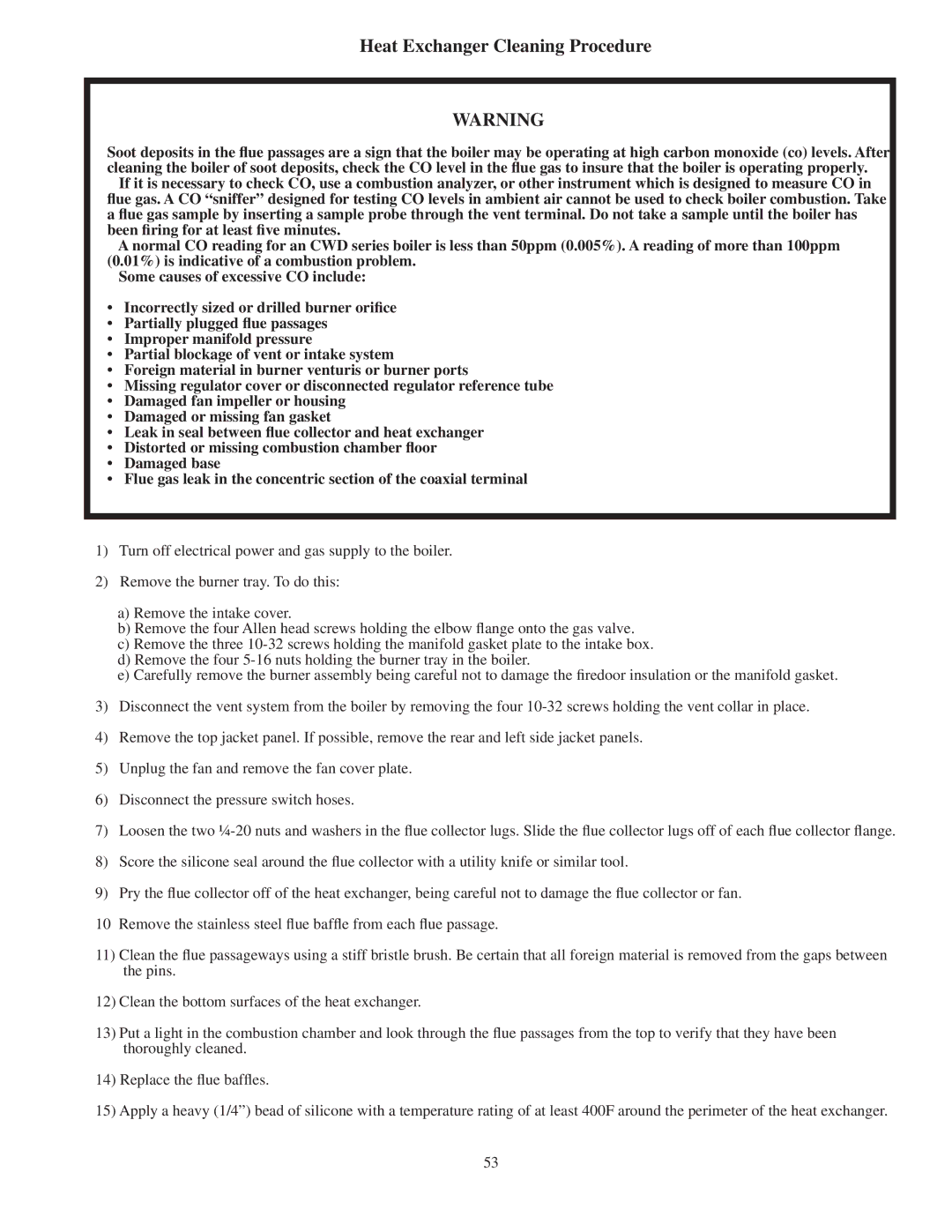CWD193, CWD165, CWD245, CWD220, CWD110 specifications
Crown Boiler Company is well-known for its commitment to quality and performance in the heating industry. Among its extensive range of products, the Crown Boiler CWD series stands out for its reliability and efficiency. This series includes models CWD060, CWD083, CWD110, CWD138, and CWD220, each designed to meet diverse heating needs in residential and commercial applications.One of the main features of the CWD series is its durable construction. Made with high-quality materials, these boilers are built to withstand the test of time. The cast iron heat exchanger delivers exceptional heat retention and efficiency, ensuring optimal performance even in demanding conditions. Additionally, the CWD models are equipped with a reliable standing pilot ignition system, which enhances user safety and operational reliability.
Another important characteristic of the Crown CWD series is its versatility in fuel options. These boilers can operate on either natural gas or propane, providing flexibility to homeowners and businesses depending on their preferred energy source. The ability to easily switch fuels makes these units adaptable to various heating applications, maximizing convenience for users.
Efficiency is a cornerstone of the Crown Boiler CWD series. With an AFUE rating of up to 85%, these boilers deliver substantial cost savings over the heating season. Their efficient operation not only lowers energy bills but also contributes to a reduced environmental impact, which is increasingly important in today’s energy-conscious world.
Crown’s innovative design features also include a low water cut-off and a built-in draft hood. The low water cut-off ensures safe operation by preventing the boiler from running dry, while the draft hood allows for optimal venting capabilities, minimizing the risk of dangerous flue gas build-up.
Maintenance is straightforward with the CWD series, thanks to its easy-access design. Routine service and inspections can be performed with minimal disruption, ensuring that the units maintain peak performance over their lifespan.
The Crown Boiler CWD060, CWD083, CWD110, CWD138, and CWD220 models exemplify the brand’s dedication to delivering high-quality heating solutions. With their impressive efficiency ratings, durable construction, versatile fuel options, and user-friendly features, these boilers represent a smart investment for anyone looking to enhance heating reliability and comfort in their space.

